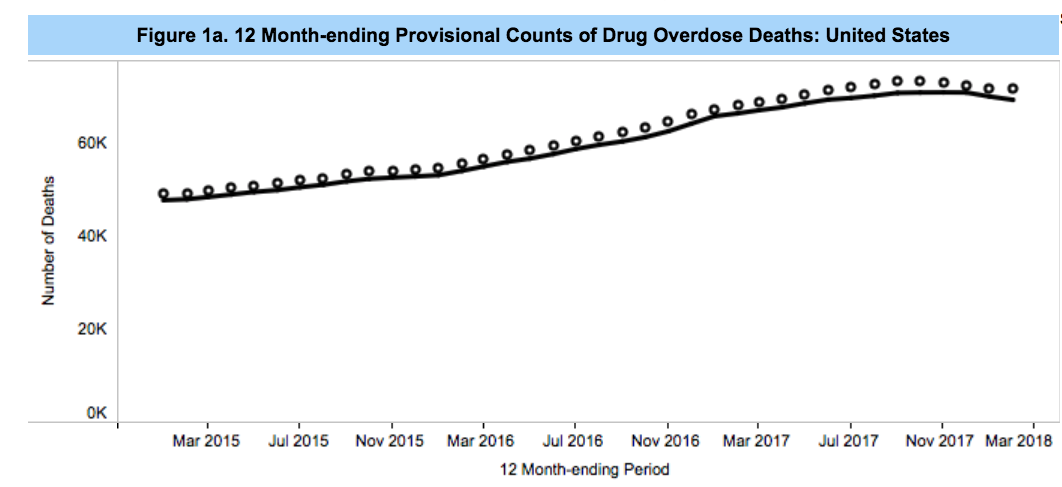Roseanne Barr says her ‘Conners’ character gets killed off by opioid overdose
Roseanne Barr revealed how her character will get killed off on the upcoming spinoff of “Roseanne” after she was fired from the ABC series in May for writing a racist tweet.
Barr told Brandon Straka on his YouTube show “Walk Away,” that the
writers of the ABC spinoff “The Conners” elected to have her character die by overdosing on opioids.
“Oh ya, they killed her,” she said. “They have her die of an opioid overdose.”
A rep for “The Conners” did not immediately return Fox News’ request for comment.
Barr made it clear she was not happy with her character’s fate saying it was disrespectful to fans “who loved that family” on the original series.
“There’s nothing I can do about it,” Barr admitted. “It’s done. It’s over.”
Barr’s former co-star John Goodman revealed previously that her character would die in the spin-off but did not say how. ABC has yet to comment on how they will handle Barr’s character’s death.
Barr made headlines after she tweeted in May that former President Barack Obama’s aide, Valerie Jarrett, who is African-American and was born in Iran, was as though the “Muslim brotherhood & planet of the apes had a baby.” ABC canceled the popular reboot of “Roseanne” shortly after the tweets.
 In case anyone is interested…. ABC is owned by The Walt Disney Company and here are some of the other major companies that The Walt Disney Company owns …
In case anyone is interested…. ABC is owned by The Walt Disney Company and here are some of the other major companies that The Walt Disney Company owns …
https://www.investopedia.com/articles/markets/102915/top-5-companies-owned-disney.asp
Here are just a few of the mouse house’s biggest companies:
1. Disney/ABC Television Group
Disney/ABC Television Group operates Disney’s broadcast television, cable television and radio businesses. Its broadcast TV businesses include ABC Studios, ABC News and the ABC Television Network, which combine to deliver programming to more than 200 local TV affiliates across the country. Disney/ABC Television Group also operates eight local television stations in some of the country’s biggest media markets. On the cable side, Disney/ABC Television Group operates the ABC Family channel and Disney Channels Worldwide, a unit that includes more than 100 Disney-branded cable networks reaching 164 countries and territories around the world.
Disney/ABC Television Group also has equity stakes in three independently operated media businesses: A&E Television Networks, Hulu, and Fusion Media Network. A&E Television Networks is an equally held joint venture with the Hearst Corporation. It operates a variety of cable channels, including A&E, History and Lifetime. Disney/ABC Television Group has a 30% stake in Hulu, an online streaming video service featuring ABC Studios content. Disney would have a controlling stake in Hulu if the Fox deal goes through. Fusion is a multi-platform media company targeted at Hispanic Americans. It is an equally held joint venture with Univision Communications, an American media and broadcast company.
2. ESPN, Inc.
ESPN is a sports media and entertainment company with eight cable networks in the U.S. and another 16 TV networks abroad. Disney holds a controlling 80% stake in ESPN, while Hearst Corporation owns 20%. In addition to its TV properties, ESPN operates other related media businesses, including ESPN.com, ESPN Radio, and WatchESPN. ESPN also holds a 30% stake in CTV Specialty Television, a multichannel Canadian sports broadcaster.
3. Walt Disney Parks & Resorts U.S., Inc.
Walt Disney Parks & Resorts U.S., Inc. operates Disneyland in California, Walt Disney World Resort in Florida, and Aulani, a spa and resort in Hawaii. These operations include numerous company-owned hotels, retail and entertainment complexes, conference centers, and indoor and outdoor recreation facilities. Walt Disney Parks & Resorts also operates Disney theme parks overseas through a handful of international subsidiaries.
Disney Parks & Resorts’ French subsidiary, Euro Disney S.A.S., owns 51% of Disneyland Paris. In China, Shanghai International Theme Park Co. controls 43% of Shanghai Disneyland Resort, Hong Kong Disneyland Management controls 47% of Hong Kong Disneyland Resort. While Walt Disney Parks & Resorts does not have an ownership stake in Japan’s Tokyo Disney Resort, it does earn licensing royalties from the Japanese operating company, Oriental Land Co.
In early February of 2018, Disney announced it would be increasing the ticket prices for its American-based theme parks by around 9%, with a regular adult one day pass at the Magic Kingdom in Orlando costing $129, instead of its former price of $124.
4. Lucasfilm Ltd. LLC
Lucasfilm is a film production company best known for producing the Star Wars and Indiana Jones series, two of the biggest-grossing film franchises in history. Disney acquired Lucasfilm in 2012 for $4.06 billion. Its subsidiary media and production businesses include Industrial Light and Magic, Skywalker Sound, and Lucas Licensing. Under Disney’s watchful eye, the company has started a new line of Star Wars films, and has plans to create a fifth Indiana Jones film starring Harrison Ford in 2019. According to the Hollywood Reporter, the company made back its purchase of Lucasfilm in late 2017 when The Last Jedi brought the total gross of these new Star Wars movies to $4.08 billion, on par with the initial buy.
5. Marvel Entertainment, LLC
Marvel Entertainment is a media and entertainment company with operations in publishing, television, and film. Marvel is best known for its catalog of fictional characters, including Spider-Man, Captain America, and the X-Men. Disney acquired Marvel and the rights to its more than 5,000 characters in 2009 for $4 billion. Marvel’s blockbuster superhero films have gone on to be huge earners for Disney, giving the company high spots on the top 10 highest grossing movies of the year for several years now. Marvel Entertainment’s subsidiaries include Marvel Studios, Marvel Animation and Marvel Comics.
Filed under: General Problems | 2 Comments »


















 Coca-Cola ‘Closely Watching’ Use of Cannabis in Wellness Drinks
Coca-Cola ‘Closely Watching’ Use of Cannabis in Wellness Drinks




